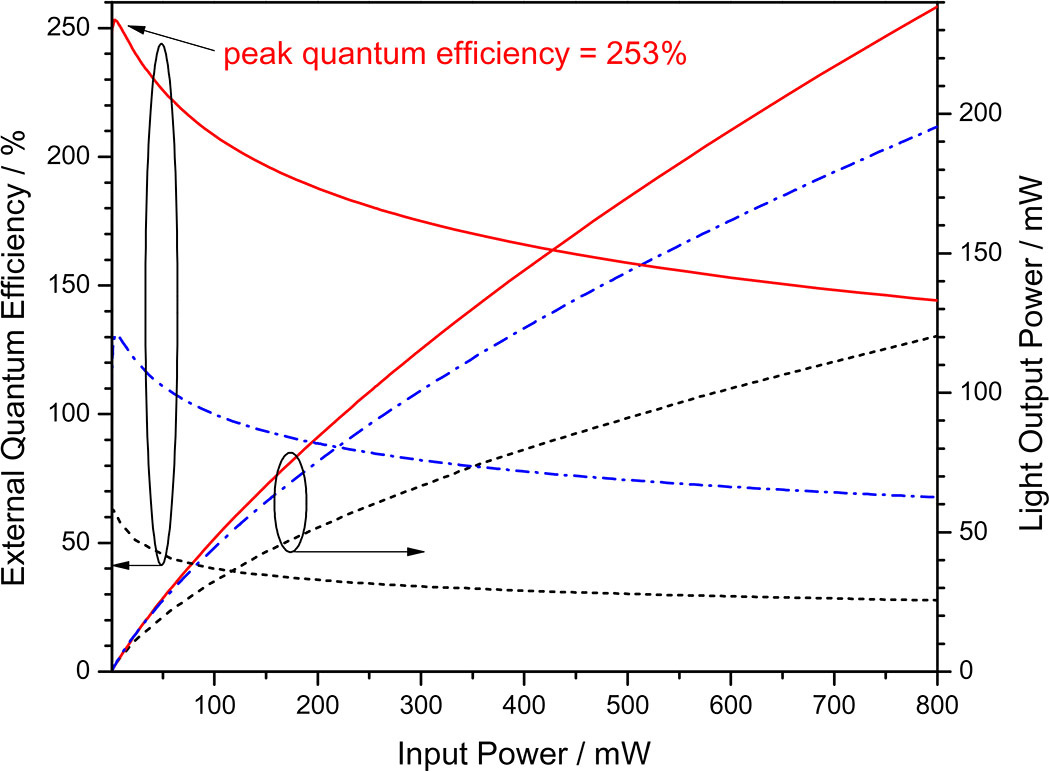Stardustsailor , είστε ένας μεγάλος δάσκαλος .
Ευχαριστώ.
Is it google translating that made such a good job translating ,
or it happens that you are a fellow greek ?
( And as you 'd probably know there's not such thing as "greek nationality " .. )
Thank you ,anyways ...
Thank you sds, very nicely explained !
I got all the info I needed.
I just I see 45mil Bridgelux are 340mW @ 350mA it is not bad, but far from the 500-630mW oslon SSL are puting out at 350mA.
But I actually understood when you said Cob are like fractal...
Tell me if this is ture please, using only quick approximations from the datasheet:
Vero is 50% efficient around 350mA, it means the die inside are now @ 30mA approximately. Wish mean Vd around 2,75V. It consume 0,08W and It make 0,25% of the 340mW / 85mW.
So Around 25% of ligth for 8 % of power ?!! understand now...
Phosphor causes about 15% up to 20% losses ?
Now ,for your example ...
1) Say ,that yes 45mil are the dies ,used in Veros .
2 ) Also say that they use the "average "
G2 bin ( 400-420 mW ) .
3) Say lastly ,that
@ 30 mA ,each die outputs just 0.15 of the 400mW =
60 mW
Then " LED die " radiant efficiency will be 0,06 W / 2.6 V * 0,03 A = 0,06 / 0,08 = 0,75 =
75%
The COB efficiency ( excitation efficiency - conversion losses ) = 75 - 20 =
55% ..
Yes ...It's amost right ...
It's not just phospor that causes these losses ...
For example ...Some of the blue photons that are not used for excitation ,
are readily absorbed by the silicone material of the LES and cause the increase of it's temperature ...
Most do manage to become "photosynthesis fuel " ,though ...LOL !
But yes more or less ,regarding most COBs ,from the diode junction point to the external surface of a LES,
radiation losses are about 1/5 to 1/4 of the initial radiant output( at the junction point ) ...
The dies used in the manufacturing of the Oslon series ,are amongst THE most efficient
LED dies used in the whole LED industry ...
If not the most efficient LEDs ever ,that actually hit the market
and finally reach to be nicely sited ,above leaf canopies ...
So ,you're comparing two different things ...
Dies used for COBs are selected for their emission wavelength ( around 450 nm )
and not by Vf or output power ...
And usually , or 'most probably ' if you prefer ,
their manufacturing cost is ( or can be ) many times less
than the one of the Oslon chips ...
Cheers .











 ....
....